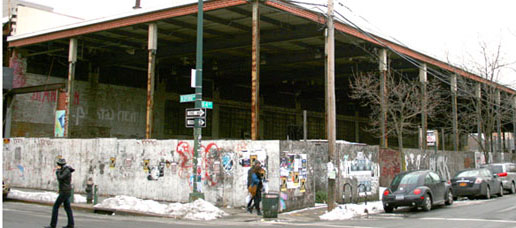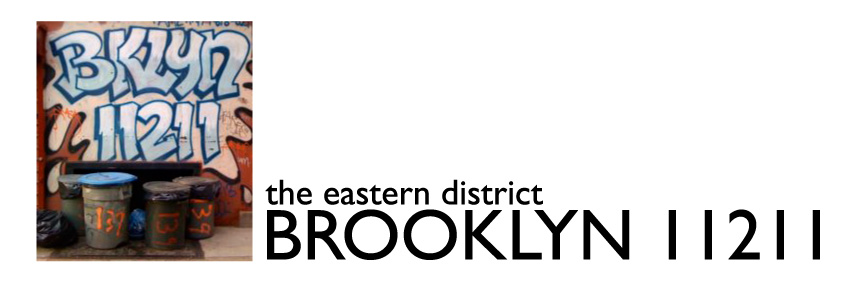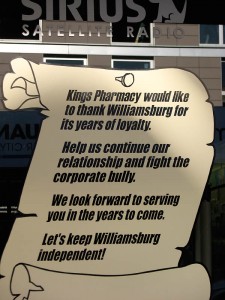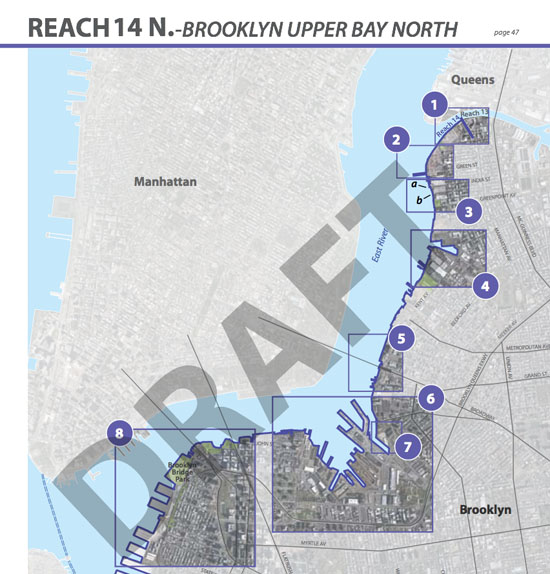Marshall’s and CVS on Bedford Avenue?

242 Bedford Avenue
Photo: The Real Deal
The Real Deal has an article saying that discount clothing retailer Marshall’s and drugstore may be coming to Bedford Avenue. The location in question is 242 Bedford Avenue, the rusted hulk at the corner of Bedford and North 4th. According to the Real Deal, the owners of the property – the Backer Group – had an agreement to sell the property, but has also gone into bankruptcy to forestall a foreclosure by Capital One Bank. As the article says, “the Backer site has a complicated background.”
Actually, that ain’t the half of it. The building (which until a few years ago housed a art framing company and other industrial tenants) was part of a larger urban renewal site that was developed in the late 70s or early 80s. The urban renewal area included the small brick townhouses along North 3rd and North 4th and the property that is now under construction by Quadriad (the Duane Reade site). Even though the block is zoned for residential use, because of the urban renewal designation, the site was restricted to manufacturing use through (I think) December, 2009.
In the fall of 2007, Backer sought the support of the Community Board to build a Commerce Bank on the corner of Bedford and affordable housing in much of the rest of the building. The Community Board (along with Council Member Diana Reyna) didn’t buy into the project, mainly because all of the affordable housing would have been studios. Without the support of the Board and Council, the owner had no hope of undoing the urban renewal designation early, so the project went away and the site continued to sit vacant. (In that sense, the Real Deal is wrong when it says that this is a stalled site – there never was a project to stall.)
The Backers, by the way, also own the large property on the other side of Bedford, which houses, among others, the Bagel Store. That site has been the subject of other retail (and chain) rumors ever since the landlord threw out the potential of a Starbucks coming to the building. I may be wrong, but I still think that was a just a “for instance” negotiating tactic on the landlord’s part, and that there is no deal to bring a Starbucks to that storefront (the Bagel Store lease won’t be up for another year or so – again, if Starbucks wants to move into the neighborhood, why would they wait two years to do so?). Regardless, between Commerce Bank and Starbucks, there is a history of retail teases here.
As for Marshall’s, I’m guessing no way. CVS maybe, but Bedford Avenue does not seem to fit Marshall’s M.O. at all. They are a retail chain that depends on auto, not foot traffic, and (typically) goes for larger stores in mall or shopping center settings. CVS is already building a store three blocks away (at the Edge), but as Duane Reade as shown us, drugstore chains have no qualms about cannibalizing their own business. And if DR is on Bedford, you can bet that CVS isn’t too far behind.
Still, the last thing Bedford Avenue needs is another side-by-side pairing of drugstores. With any luck, this site will become the grocery store that Williamsburg desperately needs (hopefully that doesn’t mean the mother of all Khim’s Millenium Markets, though). Or maybe this will be our long-promised Apple store.



